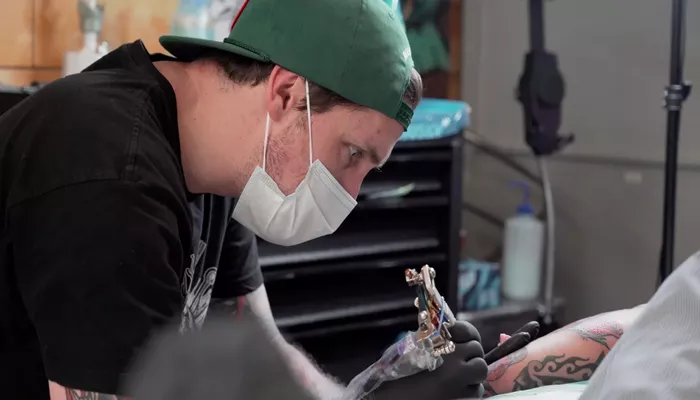Oregon has long been a hub for tattoo culture, with a history that traces back to Indigenous practices and expanded with the influx of sailors in the early 20th century. Over the years, the state has cultivated a vibrant and diverse tattoo scene, reflecting a wide array of styles from American traditional tattoos to fine line work and photorealistic designs. Oregon’s tattoo culture has been well-documented by local newspapers, which have covered the evolving art form for over a century, reflecting its growing popularity across the state.
As of recent data from the Oregon Health Authority’s Board of Electrologists and Body Art Practitioners, the state has seen a remarkable increase in the number of licensed tattoo artists. According to figures obtained by OPB, between 2019 and 2024, the number of tattoo licenses issued in Oregon has surged by a staggering 77%. This sharp rise raises important questions about the tattoo industry’s rapid expansion and what factors, particularly the COVID-19 pandemic, may have played a role in this dramatic growth.
The pandemic, which disrupted countless industries, also prompted an unexpected shift in the tattoo world. With many people facing lockdowns and social distancing measures, some took the opportunity to explore creative outlets, leading to an uptick in both demand for tattoos and the number of people seeking to enter the profession. Moreover, the pandemic shifted how people approached work and leisure, with some turning to tattooing as a form of self-expression, while others sought the flexibility and independence of becoming tattoo artists themselves.
To explore these developments and what they mean for the future of Oregon’s tattoo industry, OPB spoke with several key figures. Chris Clark and Alia Bird, the co-owners of Birdhouse Tattoo in Portland, shared their insights on how the pandemic reshaped their business and attracted a new generation of artists. They noted that, while the tattoo industry was already growing, the pandemic seemed to accelerate that growth as more people saw tattooing as both a creative passion and a viable career.
Seth Rowan, owner of Bend Tattoo Company, also weighed in, offering a perspective from a different part of the state. Rowan highlighted how the flexibility of working in a profession that could adapt to health and safety guidelines during the pandemic made tattooing an appealing option for many aspiring artists. As a result, he observed an increase in interest from individuals seeking to learn the craft, many of whom had been inspired by the growth of online tattoo communities during lockdown.
The explosion of tattoo artists in Oregon represents more than just a pandemic-era trend—it is a reflection of the growing cultural significance of tattoos and how the industry has evolved to meet both personal and professional needs. As tattoo artistry continues to thrive in Oregon, it will be important to watch how these shifts affect the future of the profession, the way tattoos are perceived, and the role of local artists in shaping the state’s tattoo identity.
Through the experiences of Clark, Bird, and Rowan, it is clear that the pandemic served as a catalyst for change in the industry, and the growth of tattoo artists in Oregon may well be a lasting impact of a challenging and transformative time.
Related topics:

